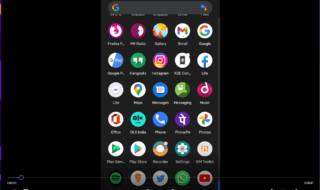Email marketing is one of the best marketing strategies to start with when you’re building up your company. Any seasoned business owner will tell you that it is crucial for brand awareness and customer experience. However, because people will often ignore your emails, you can correct that behavior by sending a follow-up email to inquire about your performance. Follow-up emails are extremely crucial for the marketing process, especially that they can either convert or deter customers away, so if you’re planning on writing follow-up emails, here are some tips.

Contents
Survey Follow-up Email
Ratings can be a great way to get a high volume of responses, but let’s face, people need highly detailed feedback in order to make their purchasing decisions. Similarly, detailed feedback can help you improve your services for future customers. If your customers aren’t inclined to write reviews, you can provide a survey link within the follow-up email to get a good volume of feedback from your customers. Make sure to think the questions through first in order to get substantial feedback that will tell you what your customers think of your company, and how you can improve their experience.
‘How Did We Do’ Inquiry
Most of the time, customers will face an array of issues despite your best efforts to make their purchasing experience as smooth as possible. In these cases, they will contact your support team and will expect a helpful response. Once that is done, you may ask how your support team’s performance was and whether or not they’re satisfied in a follow-up email. The folks at CirrusInsight.com recommend that you include a rating scale in your follow-up email, but in case you don’t have that option, you can encourage your customers to respond by hitting reply. It is also recommended that you personalize the email with the help of the CEO or the head of customer service.
‘Thank You’ Email
This is one of the most popular and basic follow-ups you can include in your follow-up templates. Thank-you emails can work wonders, on your customers, as thanking someone will typically have a positive psychological effect on them. It is crucial that you acknowledge and appreciate your customers in any way you can to get on their good graces. Mostly, you will find hundreds of templates online for thank-you emails, but you can create one yourself depending on your business and the services you provide. Make sure to personalize these emails for optimal effect and include a link to your customer service department in case they have any further inquiries.
Product Review Request
If you want a good way to track your brand’s performance, it is with product reviews. As we mentioned earlier, feedback can be helpful both to you and future customers, so it is crucial that you ask for reviews for your services and products to encourage more customers to trust your brand. Reviews will help you find out the drawbacks of your services/ products so you can fix that in the future. Make sure to collect feedback on your website layout and customer service as well, as that will help you improve the overall customer experience and gain a more profound insight into what you need to enhance in your business.
Recommendations Email
A lot of customers will stop to look at recommendations when they see them. If you start sending them product recommendations follow-up, there is a great chance that they will be curious enough to go through them. Recommendations emails are a great way to increase your revenue by upselling and cross-selling. It is also one of the most commonly used methods by multi-million-dollar companies such as Amazon. So, it is a fool-proof strategy to increase sales.
‘Anything Else’ Email
It is a common occurrence that your customer support team might mark an issue as solved and close the ticket, while your customer might still have some other issues that need to be solved. This can happen either because they were too busy to read the email or your email was lost in a torrent of their daily inbox. The anything-else email works as a gentle reminder on the status of their issue and is a good way to close off the conversation with your customer while giving them the chance to say what they have in mind. It is also a great way to make your customer feel acknowledged.

Now that you know some of the most commonly used methods to follow up with your customers, your customers’ satisfaction and experience will improve substantially. Note that follow-up emails will give you a competitive advantage, especially that not all companies use them, so be sure to utilize this advantage to its fullest potential.



